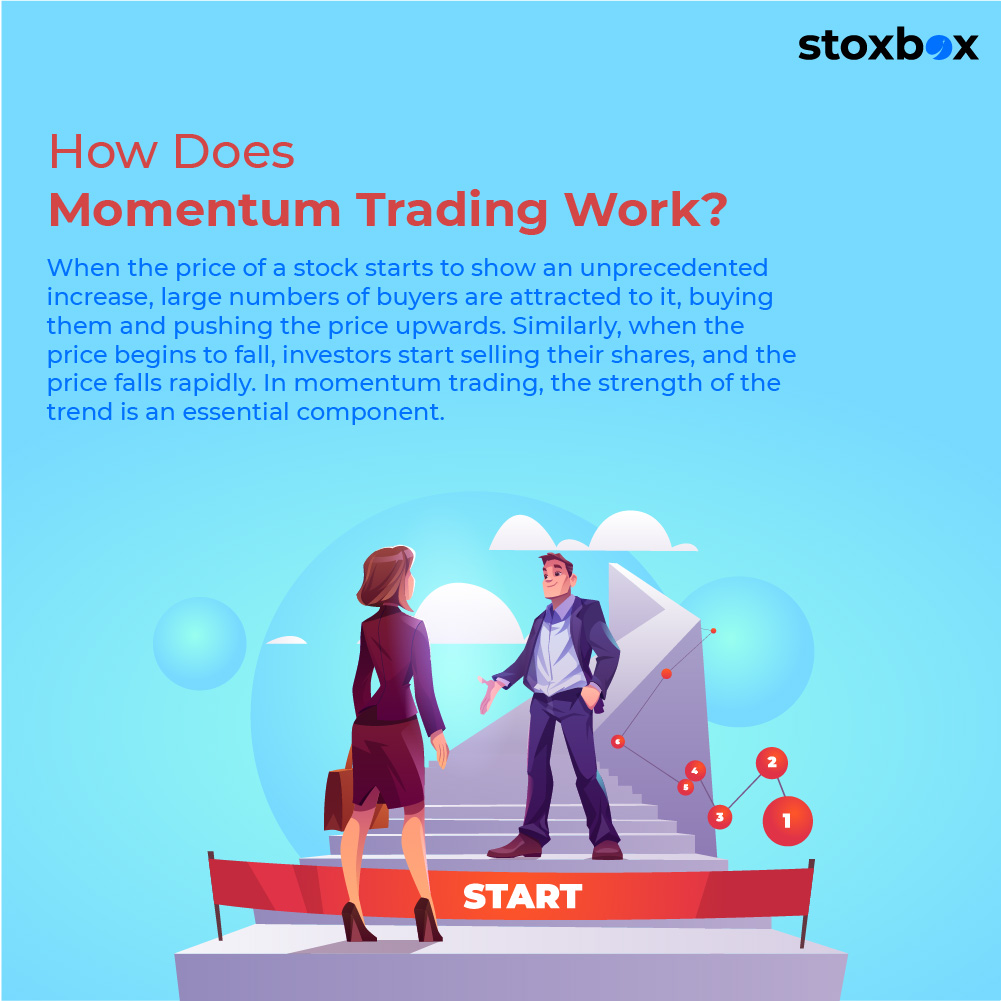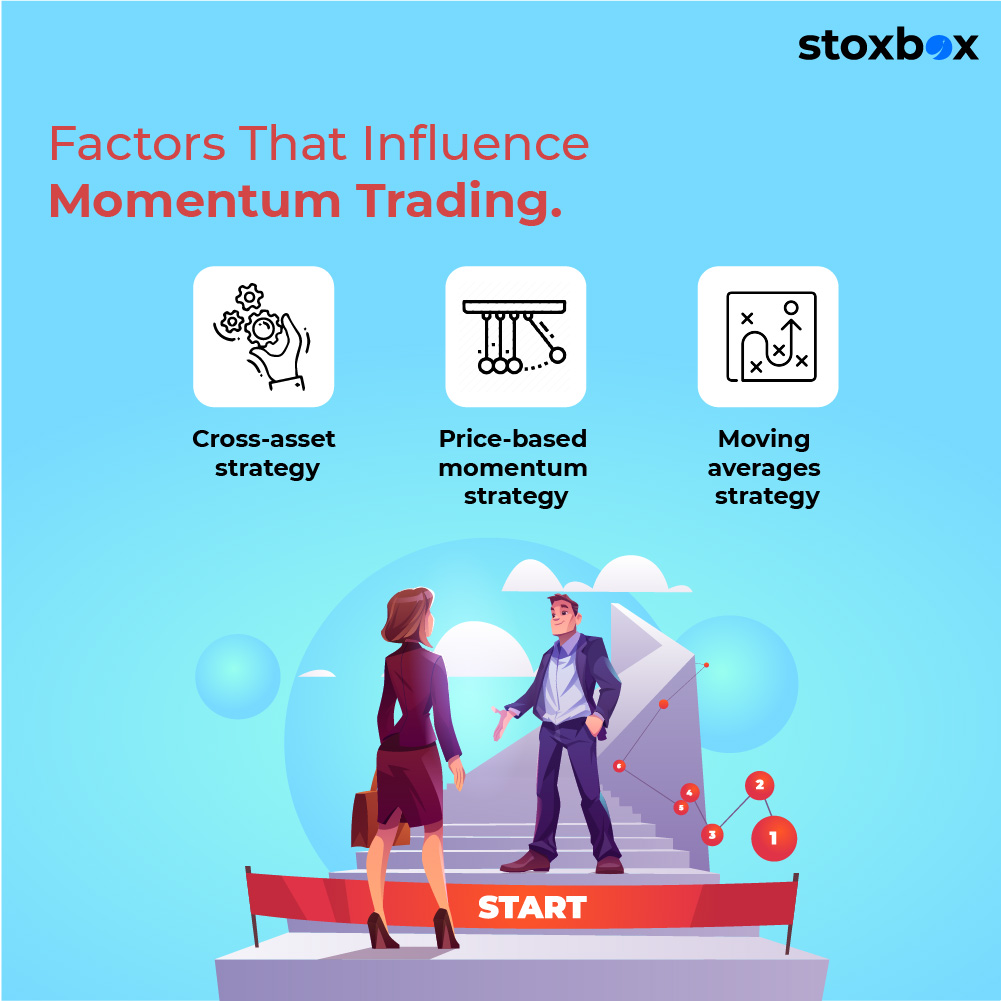Three primary factors mainly influence momentum trading:
- Volume
It is the number of units of stocks or other financial assets traded in a particular time frame. For example, if you buy 10 assets or 10 different individuals buy 1 asset each, the volume would still be the same. So, the higher the volume of trade, the higher the momentum!
Tip: Volume is a crucial factor because it depicts the liquidity of the asset. Higher volume indicates a higher number of sellers and buyers, i.e. higher liquidity, making the asset safer to buy.
- Volatility
The next factor that is crucial for momentum traders is volatility. If the volatility is high, the price of the stock will change frequently. Momentum investing works best in a volatile market and not in a stable condition.
Tip: High volatility means investors can take positions accordingly and earn a profit out of it.
- Timeframe
The price movement of a stock is in the short term. Thus, the timeframe is the duration of a particular trend (up or downwards movement of the stock price) that dictates your position in
momentum investing.
Tip: If you are looking for
long-term investment, momentum trading is not for you. It is primarily for short-term traders looking for a quick profit from frequent changes in the market.
What Is a Great Momentum Investing Strategy?
There are different types of momentum investing strategies. Momentum trading strategies are developed with the use of some technical indicators and analytical tools.
- Moving averages strategy
The first strategy which momentum traders apply when choosing stocks for their
portfolio is the moving average. Moving averages are used for understanding or generating trading signals.
Some traders use a 50-day average and a 200-day average of the stock price, and a similar set of moving averages. 50-days MA is the shorter moving average of the stock price, and the 200-days MA is the longer average of the stock price.
Technical aspect: If the shorter moving average crosses the longer moving average from above, it is a buy signal for that particular stock. Similarly, if the shorter MA crosses, the longer MA from below and backwards, it is a signal to sell that particular stock.
- Price-based momentum strategy
Another important strategy for
momentum investing is the price-based momentum strategy. Here, we use sector
ETFs (Exchange Traded Fund) or
thematic funds.
Technical aspect: The investor goes ‘long’ on
thematic funds or the sector
ETFs, which have the highest momentum while shorting the ones with the lowest momentum.
- Cross-asset strategy
Finally, the third strategy for momentum
trading is the cross-asset strategy. Here any two asset classes are put to use by the traders.
Let us consider the yield curve of the treasury bills and equity market.
Technical aspect: A signal to buy for equity is generated when the 10-years yield curve is above the 2-years yield curve (for the same asset).
Differences Between Momentum and Value Investing
Momentum investing and value investing are entirely different.
Value investing revolves around investing in assets whose perceived intrinsic value is higher than their market value. Hence, it is like buying great items at a discount now.
| Momentum Investing |
Value Investing |
| It is about chasing the asset’s momentum. It helps to determine to buy or sell the assets based on the strength of the price trend. |
It is all about investing in assets whose intrinsic value is higher than their market value. |
| Momentum traders buy when the trend is strong and sell when the trend loses momentum. |
Value investors buy when the stock is undervalued and sell when it reaches its intrinsic value. |
| It is a short-term investment strategy. |
It is a long-term investment strategy. |
Benefits of Momentum Trading
The benefits of momentum trading include:
- It is a simple strategy: All you need to do is observe the momentum of the trend.
- You can earn a higher profit in a short period.
- The market’s volatility works to your advantage.
- You can leverage the emotional decisions of other traders.
- The cost of momentum trading is lower as well.
Common Misconceptions About Momentum Investing
Since momentum trading works differently from other
types of trading, multiple myths and misconceptions about this strategy abound.
- Investors believe that returns from momentum trading are volatile. The truth is, momentum traders make use of the volatility to churn out higher profits. More volatile markets provide opportunities to the traders to make more profit.
- Another misconception is that momentum investing is for small-cap stocks only. However, the opposite is true. It is for large-cap stocks where the liquidity is high due to the volume of trading.
Is Momentum Investing the Right Choice for Beginners?
Momentum investing can be suitable for beginners who are comfortable with the time sensitivity of the trades. As a beginner, you need to be ready to put in long hours monitoring market trends. Moreover, it is a bullish market strategy. So even beginner momentum investors can profit if they put in their effort in a bull market.
Conclusion
The easier way out is to start investing through
Stoxbox, which offers you different
investment options with the benefit of
diversification to complement your elementary knowledge of
investing and
trading.
However, if you are new to
momentum investing, you need to polish your technical analysis skills, market timing, and other strategies discussed above to profit from the market.
Momentum investing is one of the easiest strategies in the stock market for trading. To continue being profitable using momentum trading strategies, you need to learn the tricks of the trade from the
investment lessons learnt in 2020 and put in your efforts and time and implement the
habits of a successful investor.







